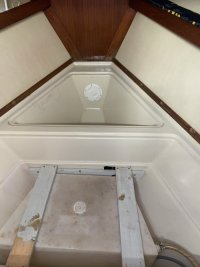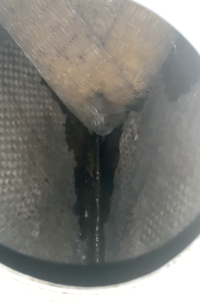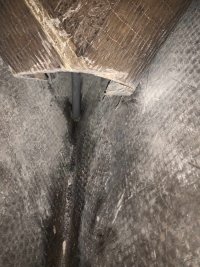jtsai
Member III
My 1990 Ericson 32-3 has a 5" access hole to the forepeak (picture #1). Through this access, reaching behind the V shaped fiberglass structure (picture #2) I am able to touch the leaky drain tube but unable to work on it due to the awkward angle. Enlarging the access hole is one of the options but the V shaped structure will remain a hinder. Another option is cutting off the V.
The V as seen in the picture does not have a front, not attached to the hull, and the anchor well bottom is few inches above the pointy V. Am I correct to assume this is a remnant of the anchor well construction and servers no purpose?
The V as seen in the picture does not have a front, not attached to the hull, and the anchor well bottom is few inches above the pointy V. Am I correct to assume this is a remnant of the anchor well construction and servers no purpose?



